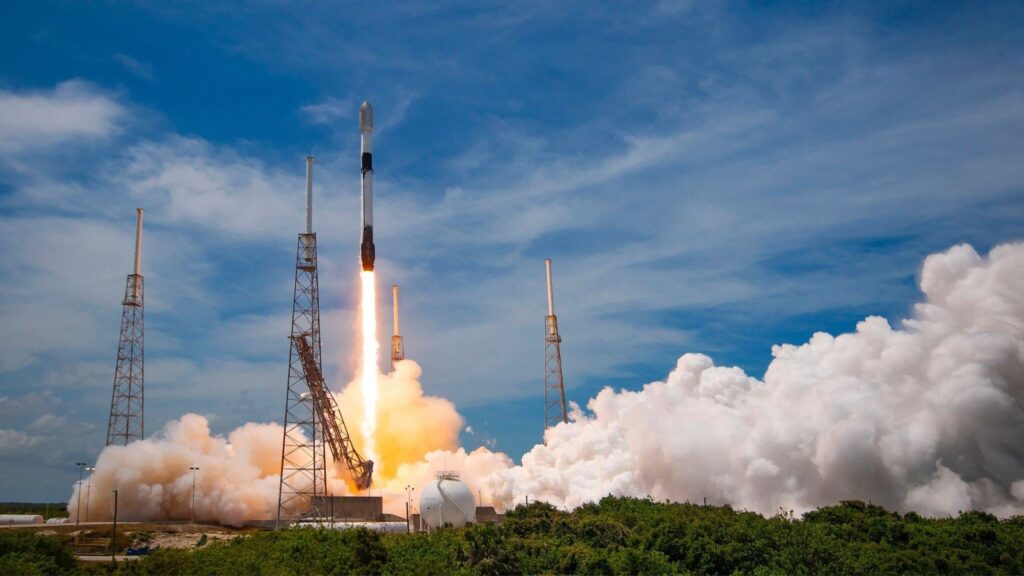
SpaceX Transporter-5 launch, 25th May 2022, carrying 5 ICEYE radar imaging satellites. (Photo: SpaceX)
WASHINGTON: The US arm of Finnish startup ICEYE intends to build, license and orbit a constellation of somewhere around 18 synthetic aperture radar (SAR) satellites separate from the parent company’s other satellites — a plan initiated to assuage national security concerns voiced by the Pentagon and Intelligence Community about relying on foreign providers, a senior company official told Breaking Defense.
SAR capability is increasingly popular around the world, especially with militaries, due to its ability to “see” through clouds and bad weather, as well as at night.
This US constellation will be “completely disconnected systems wise” from those built in Finland, said Jerry Welsh, CEO of ICEYE US, noting that the number of satellites isn’t set in stone and will depend on customer demand as much as anything else.
And in the case of US government customers with security issues, such as the National Reconnaissance Office, only those US-made birds will be tapped for SAR imagery and analytical products, he said.
“Where the US constellation is needed and necessary — and we’ve seen both cases of this, where an agency or entity either has a preference … or actually has a requirement — we’re only going to use the capacity of the US constellation,” Welsh explained. “We’ve committed to that contractually, so that drives the need to build this parallel constellation.”
Of the five new ICEYE satellites launched May 25 by SpaceX, two were built by ICEYE US — bringing the size of that parallel constellation to three.
“The newly launched ICEYE US satellites are licensed by the National Oceanic and Atmospheric Administration (NOAA) and will be operated and controlled exclusively from the company’s 24/7 Mission Operations Center in Irvine,” the firm’s press release noted.
However, for customers with no such security concerns, both in the US and abroad, ICEYE will task and provide SAR imagery and analytical products from all of the firm’s satellites, Welsh said, while maintaining separate chains of custody over the data processed in Finland and that in the US.
Last week’s SpaceX launch brought the total number of ICEYE satellites on orbit to 21. However, two of those newly launched ones were sold to Brazil and will be operated by that nation’s air force.
“I think that’s one of the the key differentiators of ICEYE. We’ll sell the data if that’s what you want. We’ll sell a satellite, we’ll sell the full system to you, or we’ll sell you a solution if you want to do something specific for a specific use case,” Welsh said. “And we’re actually finding that we’re now proving that we have substantial revenue on each of those segments, which actually makes the company you know, much more valuable long term to investors.”
While there is some additional cost to the company of keeping two separate sets of satellites and support systems operating, the arrangement does provide some advantages too, he noted. These include having “diversified supply chains” and two geographically separated manufacturing facilities that create resiliency.
“We’re in challenging times right now,” he said. “We’ve found it’s been a good decision for us.”
ICEYE currently is planning to launch another five satellites this year, Welsh said, but he did not provide a breakout of those to be built in Finland versus the US.
Textron, Leonardo bank on M-346 global experience in looming race for Navy trainer
“The strength we think we bring is that [the Navy is] going to go from contract to actually starting to turn out students much quicker than any other competitors,” a Textron executive told Breaking Defense.



























